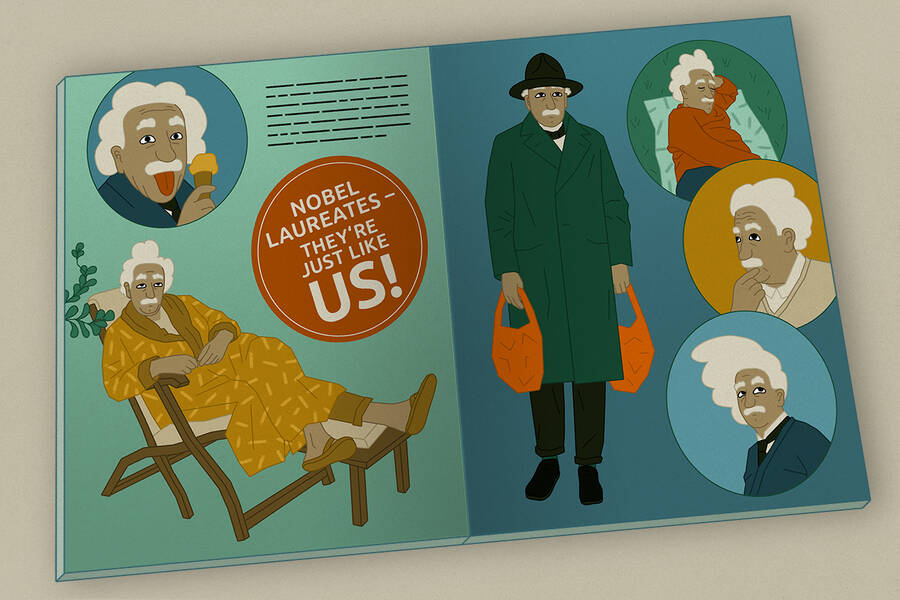Yet beyond the fanfare, critics have questioned whether these awards truly recognize groundbreaking work or if they are overshadowed by reputation, politics, and collective lobbying.
“It’s long been debated within the science community whether prizes are awarded by merit or are ceremonial, which leads to a misallocation of resources and demotivation for innovation—the opposite of the intended objective of prizes,” says Brian Uzzi, a Kellogg professor of management and organizations.
As a scientist and award winner himself, Uzzi was intrigued by this debate.
So he collaborated with former Kellogg research fellows Yifang Ma at China’s Southern University of Science and Technology (SUSTech) and Ching Jin at Warwick University, as well as Chaolin Tian and Yurui Huang at SUSTech, to determine if prizewinning scientists were indeed more innovative than their non-prizewinning peers.
Using an original database of 2,460 international prizes, they found that prizewinners were not only more innovative but also produced research that was increasingly more innovative over a period of time starting about five years before winning their prize.
What’s more, this gap in innovation between prizewinners and non-prizewinners persisted for years after winning an award.
“Our work suggests science prizes are based largely on the recognized work’s innovativeness,” Uzzi says. “Prizes reward past innovativeness and help us identify where future work will flourish.”
Measuring innovation
The researchers focused on three measures of innovativeness for their study: “novelty,” “convergence,” and “interdisciplinarity.”
The first measure of innovation builds upon the idea of novelty that Uzzi and Kellogg colleague Ben Jones, a professor of strategy, developed in prior research: the extent to which research combines preexisting ideas in unfamiliar ways. “Innovation occurs when existing building blocks of ideas are reassembled in new, unexpected ways,” Uzzi says.
They assessed “novelty” by examining how divergent the works cited in a research paper’s reference section are compared with a random selection of citations. For example, research today citing both Albert Einstein and Niels Bohr would be a common, less-innovative combination, whereas referencing Einstein and sociologist Michel Foucault, who believed that truth is relative to a context, would be considered more novel.
The second measure, “convergence,” is about how well a research paper integrates older foundational ideas with new ones. “Convergence, for example, might involve a research paper that connects anthropological work on group formation in preliterate tribes with modern computer science perspectives on echo chambers,” Uzzi says.
The third measure, “interdisciplinarity,” is about the breadth of topics from which a research paper draws.
Importantly, the researchers used factor analysis to show that these three measures of innovativeness were related but independent. “A given paper could be very high on one or two measures but low on the others,” Uzzi says. “For example, a paper might bring together work that is from different disciplines—like physics and chemistry or ecology and sociology—but [involves] common combinations. So, the paper may be high on ‘interdisciplinarity’ but low on ‘novelty.’”
Combining these three factors allowed Uzzi and colleagues to measure multiple facets of an individual scientist’s innovativeness across their career.
An early innovation gap
In all, the team examined 2,640 worldwide prizes and more than 23,000 scientists who won a prize from 1900 to 2018.
They matched each of the prizewinners with multiple non-prizewinners who started working in the same field at about the same time. They also matched prizewinners and non-prizewinners annually based on factors such as when they published their first paper, their research productivity, and the citation impact of their papers.
The researchers used the raw data to create statistical models comparing prizewinners and non-prizewinners on each of the three innovation measures over the course of their careers. The models showed that prizewinners and non-prizewinners were similarly innovative early on in their careers.
But a shift emerged in the few years leading up to when prizewinners received their first award.
Specifically, prizewinners tended to break away from similar researchers in their fields on one or more of the three innovativeness measures about four-to-five years before winning a prize, despite publishing a similar number of papers and having a similar citation impact in their field.
In general, the gap in innovativeness between prizewinners and their peers widened in the years approaching the year they won a prize, peaked around the time of the prize, and persisted long afterward.
Do the rich get richer?
Uncovering this pattern led the team to ask: Was the persistent gap in innovation after winning a prize simply a result of the rich getting richer? After all, prizewinners may receive better access to media attention, funding, and publishing opportunities—and that cumulative advantage could help boost their work on all dimensions.
The researchers addressed that question by comparing the post-prize careers of those who won highly prestigious awards like the Nobel Prize with the careers of those who won lesser-known awards.
“If the Matthew Effect is in play—where the rich get richer—those who win high-prestige prizes should separate themselves more from others in their field than those who win low-prestige prizes,” Uzzi says. But the team found no difference in the innovation gap between high- and low-prestige prizewinners.
Furthermore, the researchers compared the research networks of prizewinners and non-prizewinners and found that prizewinners tended to collaborate with more experts in unfamiliar topics, publish papers with coauthors whose networks overlapped less, and maintain collaborations for shorter periods of time.
“The prizewinners are less likely to be in an echo chamber of like-minded thinking,” which might have helped boost the innovativeness of their work, Uzzi says.
In addition, tests showed that the scientists who collaborated with prizewinners and non-prizewinners had statistically similar academic records. This suggests that the innovativeness of prizewinners has more to do with the structure of their network than with the academic prominence of their collaborators.
Deserving of a prize
The current system for science prizes may not solve the “41st Chair Problem”—the idea that there are more deserving participants in any field than there are prizes and other recognitions for that field.
But the findings do suggest that, overall, science prizes are largely merit-based and thus “reward intellectual substance and innovation,” Uzzi says.
Nevertheless, “there may still be inequalities in the system, like the fact that men win more prizes than women, given the base rates,” he adds. “But ensuring that those who win prizes deserve them is a step away from that inequality and raises the impressions of those within an underrepresented group and encourages others within it when they win—like when two women scientists won the Nobel for the CRISPR gene-editing technology.”



